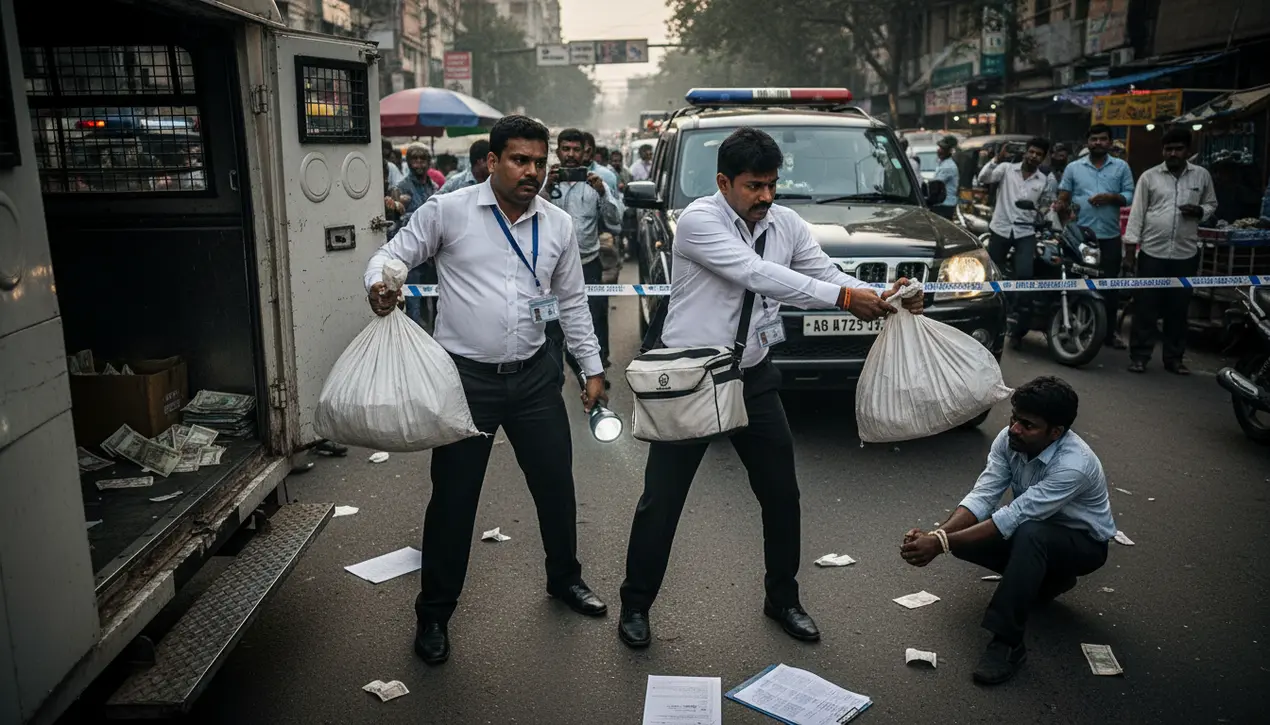
FinancebankingBank Failures
Men Impersonate Central Bank Officials in $800,000 Cash Van Heist.
OL
Oliver Scott
2 days ago7 min read5 comments
In a meticulously planned operation that reads like a screenplay, a sophisticated criminal syndicate has executed a high-stakes heist in Bengaluru, India, netting a staggering $800,000 by brazenly impersonating officials from the nation's central bank. This was not a smash-and-grab; it was a performance of chilling audacity, targeting the very arteries of the financial system—the cash-in-transit vans that form the lifeblood of daily commerce.The initial police report, stating the gang robbed a van transporting cash between bank branches, barely scratches the surface of the systemic vulnerabilities this event exposes. The perpetrators didn't rely on brute force alone; their primary weapon was credibility, forged through the calculated use of counterfeit credentials and the psychological advantage that a central bank's authority commands.This scenario forces a stark risk assessment: if the sanctity of official financial channels can be so easily violated by actors in convincing costume, what does that signal for the stability of public trust in our monetary institutions? The immediate consequences are clear—a major financial loss and a sprawling manhunt—but the second and third-order effects are far more insidious. We must consider the precedent this sets for copycat crimes, the inevitable tightening of security protocols that will slow legitimate financial operations, and the chilling message it sends to international investors about the robustness of financial security in a major tech hub like Bengaluru.Historically, such heists are not isolated incidents but rather symptoms of deeper institutional frailties; one need only recall the 2006 Securitas depot robbery in the UK, where similar deception was used, to understand that this is a tested playbook. The strategic implications are profound, pointing to a potential shift in organized crime from opportunistic thefts to intelligence-driven operations that exploit specific procedural weaknesses.Expert commentary from financial security analysts suggests this was likely an inside job or the result of prolonged surveillance, indicating a level of planning that traditional law enforcement is often ill-equipped to counter. This event should be analyzed not as a simple crime, but as a strategic shock to the local financial ecosystem, one that demands a recalibration of risk models for banks, security firms, and regulators who now operate in a landscape where the badge of authority itself can be a weapon.
#heist
#robbery
#impersonation
#central bank
#Bengaluru
#cash transport
#criminal investigation
#featured
Stay Informed. Act Smarter.
Get weekly highlights, major headlines, and expert insights — then put your knowledge to work in our live prediction markets.
Related News
Comments
Loading comments...
© 2025 Outpoll Service LTD. All rights reserved.